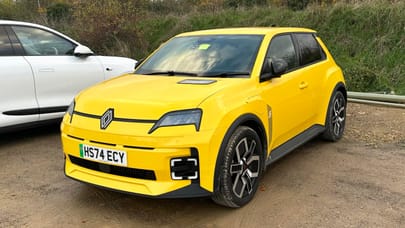
Opinion: here's why 0-62mph times are a farce
They might look good on paper, but there are too many variations so ultimately, what's the point?
Ever fantasise about following some of the journeys we feature at Top Gear? Nice idea. Except for the one we talk about most often. You’d be daft to repeat it in your own car, and we know that you know that. It’s the one from 0 to 62mph. Though we talk about it we, ahem, don’t actually do it very often for ourselves.
The American media, bred out of a drag racing culture, obsessively measure acceleration times, but 0–60 of course. The Germans, bred out of a culture where what cannot be measured cannot be considered, obsessively measure it too, except 0–100kph which is 0–62mph. YouTubers do it, managing to stretch a quick five-second squirt down a runway into a yawning gibbering 20 minutes of footage through which we all rapidly scrub.
At TG we usually quote the manufacturer’s figure. That’s because measuring 0–62 is highly abusive of any car with manual transmission, liable to burn clutches, snap driveshafts and ruin tyres. It’s also inexact, depending on surface, weather, temperature, and the skill and luck of the driver. It demands expensive facilities and equipment, and we understand you’d rather we spent that time and money testing on good roads and gathering beautiful photos.
But wait. What if we’re quoting a distorted figure, if the manufacturers are making bent claims? Well, remember we have to borrow cars from them. If they lied about the 0–62 time, they’d probably also nobble the test car’s engine, quietly chipping for more power so we could match their times. So we’d have to control for that by doing a dyno test as well. Another expensive, time-consuming and abusive business.
I CARE LITTLE FOR THE MEASURED ACCELERATION. WHAT MATTERS IS THE FEELING OF ACCELERATION
Anyway, what are these acceleration measurements? In the US, they use a ‘one-foot rollout’: the clock starts ticking when the car has travelled one foot. So, duh, it’s no longer doing zero. And we must consider launch control, a lengthy sequence of button pushes and pedal jabs, before you even set off on the actual timed run. To match the manufacturer’s quoted 0–60, an American magazine had to spend ages lowering the Cadillac CT5 Blackwing’s tyre pressures and experimenting with its launch control’s rpm and tyre slip parameters. In the famous case of the emperors of 0–62, the Teslas, you have to do a lengthy battery conditioning process. While you wait for all that to happen, I think the clock should surely be ticking. And I’d already be at the far end of the runway – having walked there.
But more than all that, 0–62 times simply don’t matter. I care little for the measured acceleration. What matters is the feeling of acceleration. Does the car answer the accelerator promptly? Overtake well? Make nice noises as it goes? And is that acceleration at its best over the speed range I require?
If I floor it from, let’s say, a steady 45mph, how long do I have to wait for the turbos to spool up, the auto box to thump down, and then to accelerate up to 62 or indeed whatever speed I need? It’s all way beyond the compass of the 0–62 digits. You need a wordy description, and that’s my job.
Top Gear
Newsletter
Thank you for subscribing to our newsletter. Look out for your regular round-up of news, reviews and offers in your inbox.
Get all the latest news, reviews and exclusives, direct to your inbox.
Trending this week
- Car Review
BMW 1 Series
- Top Gear's Top 9
Nine dreadful bits of 'homeware' made by carmakers








